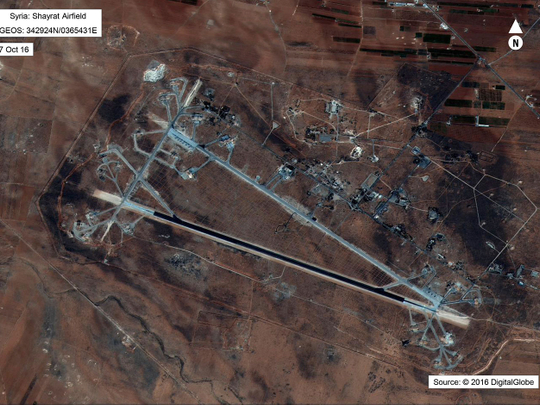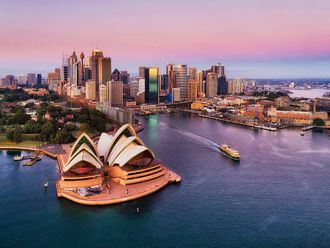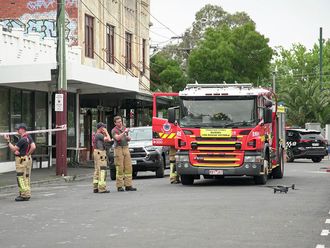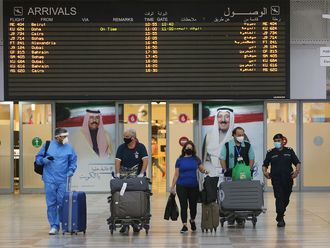
THE HAGUE: The world’s chemical weapons watchdog has been probing Syria’s stockpiles since 2013, encountering delays, obstructions, and suspicions that Damascus was not giving a full picture.
Here are some key questions in the wake of President Bashar Al Assad’s dramatic overthrow by Islamist rebels that has thrown up uncertainty over control of the suspected arsenal.
Israel has already announced bombing raids on “remaining chemical weapons” to stop them falling into the wrong hands.
What is the current situation?
The director-general of the Organisation for the Prohibition of Chemical Weapons (OPCW) voiced his “serious concern” over Syria’s potential stockpiles on November 25.
Fernando Arias said there could be “large quantities of potentially undeclared or unverified chemical warfare agents and chemical munitions” still in Syria.
Since 2014, the OPCW has raised 26 separate questions over potential stockpiles with the Syrian authorities. Only seven have been resolved.
“Despite more than a decade of intensive work, the Syrian Arab Republic chemical weapons dossier still cannot be closed,” he said at the OPCW annual meeting.
On Monday, the OPCW said it had contacted Syrian authorities to stress the “paramount importance” of securing the weapons.
What did Syria declare?
Under Russian and US pressure, Syria in September 2013 agreed to join the OPCW and disclose and hand over its toxic stockpile to avert the threat of US and allied air strikes.
This came after a chemical attack in the Ghouta suburb of Damascus that crossed the “red line” set by then US president Barack Obama.
The attack on East Ghouta, which killed more than 1,000 according to US intelligence, was attributed to the Syrian government, which denied involvement and blamed the rebels.
In January 2016, the OPCW announced the complete removal and destruction of 1,300 metric tonnes of chemical weapons from Syria that the authorities had declared.
But the OPCW suspects that Syria’s initial 2013 declaration was riddled with “gaps and inconsistencies”.
Lennie Phillips, senior research fellow at the London-based Royal United Services Institute, told AFP: “I think it’s fairly clear that the declaration never was complete and they do have chemical weapons still stored somewhere.”
Why did the OPCW suspend Syria?
In 2021, OPCW members stripped Syria of voting rights after a probe blamed Damascus for poison gas attacks carried out after they had claimed the stockpile was no more.
The watchdog found the Syrian air force had used the nerve agent sarin and chlorine gas in three attacks on the village of Lataminah in 2017.
Pressure further mounted when a second OPCW investigation concluded a Syrian helicopter dropped a chlorine bomb on the rebel-held town of Saraqib in 2018.
Damascus then failed to adhere to a 90-day deadline to declare the weapons used in the attacks, reveal its remaining stocks and comply with OPCW inspections.
What evidence of chemical weapons use?
In 2014, the OPCW set up what it called a “fact-finding mission” to investigate chemical weapons use in Syria.
This team has issued 21 reports covering 74 instances of alleged chemical weapons use, according to the OPCW.
Investigators concluded that chemical weapons were used or likely used in 20 instances.
In 14 of these cases, the chemical used was chlorine. Sarin was used in three cases and mustard agent was employed in the remaining three.
Who was responsible?
The OPCW also established a second unit, known as the investigation and identification team (IIT), to establish responsibility for the use of chemical weapons.
Using forensic analysis, witness interviews, and medical tests on victims, this team concluded the Syrian army was behind three attacks.
In addition to the 2017 Lataminah attack and the 2018 attack on Saraqib, this team also accused Syria of a chlorine attack on the rebel-held town of Douma in 2018 that killed 43 people.
The IIT also concluded that Daesh (Islamic State/Isis) in Iraq and the Levant carried out a chemical weapons attack in September 2015 in the Syrian town of Marea.
What next?
World powers are scrambling to ensure the stockpiles do not now fall into the wrong hands.
A senior US administration official said the US military has “good fidelity” on the weapons’ location.
“We’re doing everything we can to prudently ensure that those materials... obviously are either not available to anyone or are cared for.”
Meanwhile, Israel’s foreign minister said his country’s warplanes had struck “remaining chemical weapons in order that they will not fall in the hands of extremists.”
The Islamist Hayat Tahrir al-Sham (HTS) rebels who deposed Assad have said they “do not have any intention or desire” to use chemical weapons.
“I would think that they would want some sort of external input to help them either remove those chemical weapons or destroy those chemical weapons,” RUSI’s Phillips said.










